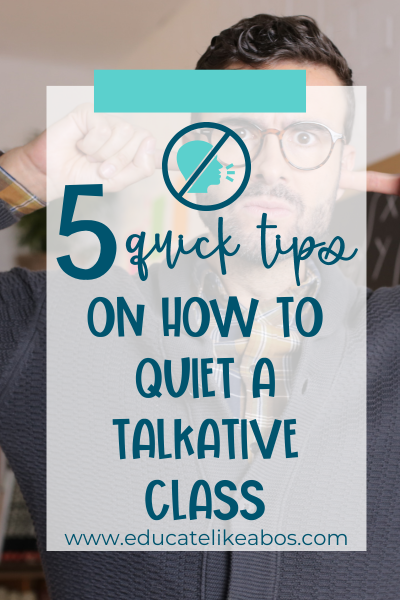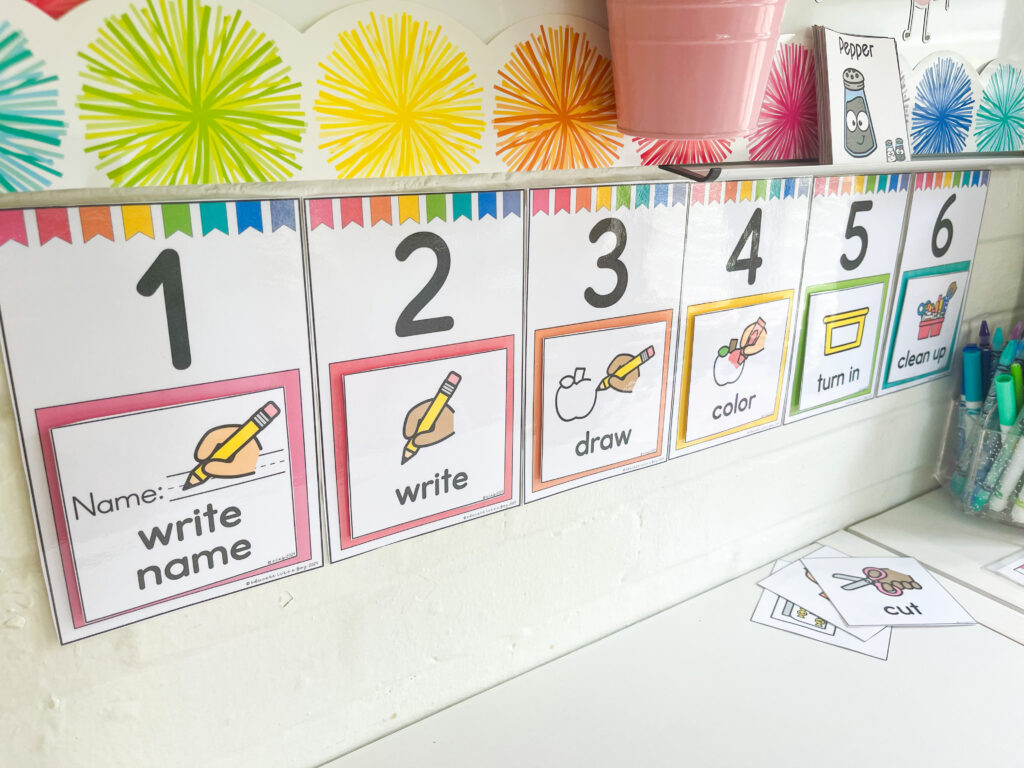I am a part of quite a few social media groups for teachers, and one thing they all have in common is that a large number of teachers are struggling with a talkative class!
Students are blurting out, talking while the teacher is talking, and talking during quiet independent work time. To quote one teacher, “The kids just WON’T BE QUIET!” It is hard and frustrating to feel like you are constantly having to talk over a classroom full of children, constantly reminding students that they are supposed to be quietly working, or using the dreaded phrase “I’ll wait” knowing that you will probably be waiting quite a while if you were to wait for students to be quiet on their own.
A couple of things I have noticed is that this is going on all over the country; you are not alone in your struggle to quiet your class. Teachers everywhere are struggling to get students to stop talking! And this seems to have gotten much worse over the last several years!
5 Strategies to Quiet a Talkative Class
I can attest that when I started teaching, I did not need the same number of tools to get my class to quiet down, work quietly, or stop talking when I was talking as I have the last few years. But there is HOPE! Here are 5 quick tips you can implement in your classroom to finally get your talkative class to STOP TALKING!
#1: Strategically Start Your Lessons
Get students ready to begin a lesson with a calm-down strategy. Something as simple as having students take a few deep breaths or counting down slowly from 10 can recenter students after an activity and prepare them to learn.
Focused Direction Giving Time
Having a focused time for giving directions can work wonders for keeping a class on track. Try giving instructions from the same spot every time, like the front of the room near the board, so students always know where to look.
Use a fun attention grabber to signal it’s time to listen up—trust me. It’ll save you from repeating yourself a hundred times! Visuals like daily slides, supply cards, or procedure reminders can help keep students on task without constant nagging. And for a fun twist, throw in a magic word! Whether it’s a goofy phrase you switch up monthly or something you stick with all year, students can’t start their work until they hear the magic word—it’ll keep things fresh and fun while also giving them a clear cue to begin.
Free But FOCUSED Discussion
At the start of a lesson, allowing for free yet focused discussion can be a great way to engage students. Pose a question that ties into your lesson and give students a minute or two to discuss their thoughts with a partner or at their table.
This gives them the freedom to talk while keeping the conversation relevant to the topic at hand. Setting clear expectations that the discussion must stay on task helps students explore the subject matter without veering off track, making the transition into the main lesson smoother and more interactive.
#2: Don’t Talk Over Students
This can be so hard when you have a chatty class! You may feel like you are wasting time but you don’t want to start your lesson until you have the whole class’s attention. But that doesn’t mean standing at the front of the room and saying, “I’ll wait.”
Attention Grabbers
Try an attention grabber, over and over, if you have to, until you have the entire class with their attention on you. You can grab these 10 free attention grabbers to try.
Quiet Game
Make it a game – start a timer on your board and see how long it takes your class to quiet down. Then, make it a challenge to beat their time the next time you have to start the timer. Many students love games and are competitive, so this can be a fun way to work on getting your talkative class to stop talking.
#3: Keep Lessons Short! Students NEED Breaks!
A good rule of thumb is that a child’s attention span typically matches their age—so for first graders, that’s about 6-7 minutes before they need a change of pace. Keep your uninterrupted talking time brief, and then mix things up with a quick movement break or a short talking break.
These breaks don’t have to take students off task; they can still be tied to the lesson. Whether it’s a stretch related to the topic or a quick chat with a partner, giving students these moments helps them reset and stay engaged throughout the lesson.
Turn and Talk
Have students do partner talks as a quick moment where they get to interact with each other, still focused on your lesson.
Skills and Movement
Have students spread out and arm write phonics skills or spelling words so that they are moving and getting some wiggles out while still learning concepts you are trying to teach.
Center Work and Small Tasks
Split up your whole group time into smaller sections and have students do a center, go back to their seat to do a workbook page, etc, in between your whole group carpet time so that they aren’t just still there for a long period of time.
#4: Teach and Remind Students of Talking Expectations
Students need to be taught to control their voice, control their impulses to shout out, how to calm themselves down, and how to listen. Books are a great way to teach these things within the classroom. Check out these books. All about talking, listening, interrupting, and calming down.
Talking Expectations Booklist
Decibella and Her 6-Inch Voice by Julia Cook
My Mouth is a Volcano by Julia Cook
Lacy Walker, Nonstop Talker by Christianne Jones
Howard B. Wigglebottom Learns to Listen by Howard Binkow
Interrupting Chicken by David Ezra Stein
Alphabreaths: The ABCs of Mindful Breathing by Christopher Willard
Students also need to be reminded of the expectations that you have. Having visuals like these voice-level posters that you can reference students back to or having some verbal reminders like “Are you using your 6-inch voice?” are great ways to remind students of your expectations for talking in the classroom.
#5: Allow Productive Talk
At the end of the day, students NEED to have time throughout the school day to get their chatting out, and lunch and recess don’t cut it! I know it is TOUGH, but you have to include times when students can talk with one another in your classroom. And I know this is VERY HARD, but sometimes students do just need to make a soft noise.
A soft buzz or a quiet hum can be productive for a student as long as it does not become disruptive to the whole class. I also try my best to allow talking during craftivities when it isn’t going to negatively impact learning; as long as they can be working while they quietly chat, I try to allow it.
I hope you find these tips helpful for your talkative class! Sometimes, it isn’t all about controlling the talking as much as it is managing it well! For more tips on managing your classroom well, check out 7 effective classroom management strategies for teachers.






